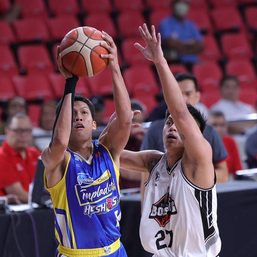SUMMARY
This is AI generated summarization, which may have errors. For context, always refer to the full article.
DAPITAN CITY, Philippines – “It’s still early in the morning, December 30 [1896]. I walked alone to Fort Santiago, when I saw a group of Guardia Civil with my maestro [Jose Rizal] marching towards Bagumbayan. I panicked and ran towards Compania Maritima, but then I started to ask myself: What am I running away for? I mustered strength, and went back – this time a lot of people are gathering at the meadow – and witnessed my maestro die.”
This was how Jose Aseniero, one of Rizal’s 24 students in Dapitan, recalled the execution of the Philippine national hero in his memoir written in Spanish, as translated by his grandson, George Aseniero.
Five months before Rizal was executed on December 30, 1896, Jose Aseniero and 3 others accompanied him to Manila from Dapitan, where Rizal had lived in exile for 4 years.
“The plan was for the 4 of them to get higher education in Manila and eventually abroad, but they were overtaken by events,” George Aseniero told Rappler.
His grandfather, he added, had been closest to Rizal.
“My grandfather was with Josephine Bracken and Trinidad (Rizal’s youngest sister) was with Rizal at his cell in Fort Santiago on the eve of his execution,” he said.
When the Spanish guards ordered them to leave the cell, Rizal handed his sister an oil lamp. At that moment, Jose Aseniero believed that there was something hidden inside the lamp, but could not say a word.
“At Josephine’s lodging, they remembered the lamp and opened it, and saw the poem written in several sheets of paper. It had no title,” George Aseniero said, referring to what is now known as Rizal’s final poem, Mi Ultimo Adios (My Last Farewell).
“My grandfather spent the night copying the poem, and by dawn he already memorized it. By sunrise he was walking towards Fort Santiago,” he added.
It was Rizal’s teachings about courage that brought Jose Aseniero back to Bagumbayan – now Luneta – to witness the execution of his “adored maestro.”
“Rizal taught his students about courage, that education is wasted on a coward. Just like today, a lot of Filipinos have education, but they usually don’t say a thing when they see wrongdoing in their midst,” George Aseniero said.
Rizal had also prepared his students for civic duties. Jose Aseniero eventually served the government under the Americans, rising from the ranks until he was elected governor of Zamboanga in 1929.
“It was because of Rizal that my grandfather got a deep sense of dedication and service to country. He had an immense sense of duty that he did not see it as a career, or something to aspire for. He sees service to country as something that all of us must do,” George Aseniero said.
When Jose Aseniero was about to end his term as governor, former President Manuel L. Quezon invited him to join politics but he declined.
“He said, ‘I’m sorry, Mr President, but I have done my service. Let’s give others the chance to serve our country. I’m going to take care of my family,'” George Aseniero quoted in his grandfather’s memoir.
He added that if today’s Filipinos have the kind of dedication, service, and sense of duty to country like what they had before, “then we can say to our children that they will be okay.” – Rappler.com
Add a comment
How does this make you feel?





There are no comments yet. Add your comment to start the conversation.